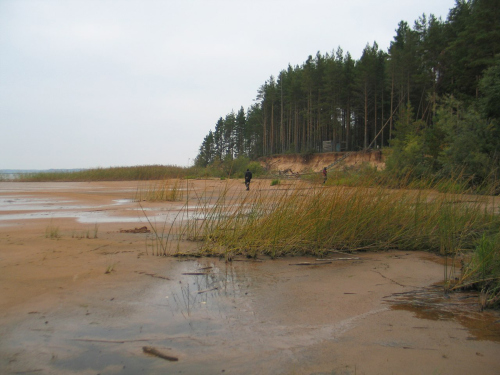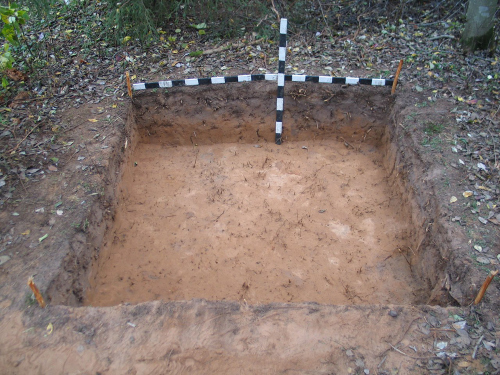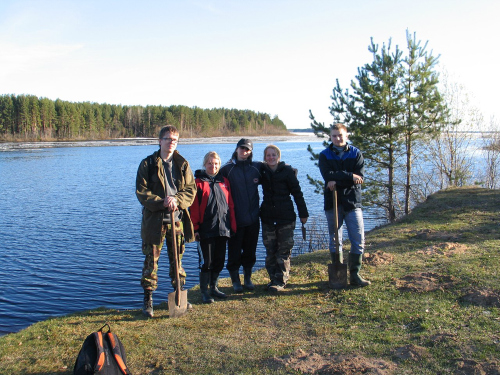During the surveying season 2013 that came to the end not long ago, the United Archeological Expedition of Cherepovets State University and the Cherepovets Museum Association carried out research in the Kirillov, the Vozhega, the Ustyuzhna, and the Cherepovets districts. It was headed by Natalya Kosorukova, candidate of historical sciences, docent of the History and Philosophy Sub-department in the Humanities Department of Cherepovets State University. Like in the previous years, students and graduates of Cherepovets State University participated in the expedition. They worked in accordance with the projects of the Russian Humanitarian Scientific Foundation and the Russian Geographical Society.

As for the Kirillov district, they continued archeological excavations of the peat site near the former Pogostishche village on the bank of the Modlona River. This site is located at the marshy lowland. The finds of the Mesolithic or the Middle Stone Age lie at the depth of 1,3-1,5 metres in the sapropel layer and are covered with a large layer of peat. They lie lower than the water level; therefore the members of the expedition applied a special method - a well, water-removing grooves, and pumping of water. The peat sites are important because organic materials – bones, wood, birth bark and articles made of them - are preserved there. Only stone is preserved in the sites on mineral grounds (for example, with a sand layer) in comparison with the peat ones.
It is very difficult to find peat sites and to carry out digs there, but information that you can get from them is really invaluable. Therefore it is a great piece of luck to find such a monument.

In 2013, during the excavations of the Pogostishche site 15, they found a number of ivory articles, including arrow-heads of various types. Items with biconical heads prevailed among them. One needle-shaped arrow-head was decorated with ornaments in the shape of short horizontal inlaid patterns and upturned Roman figures “X”. There were harpoons, knives, ice shovels, spear-heads, pendants made of elk, wolf, and marten teeth. Stone things were made of flint and shale. Numerous cores, plates and slivers show that there was an ancient workshop. Besides, they found scrapers, plates with retouch, axes, and adzes. The most interesting find was a mysterious shale plate with a drilled hole in the middle. Using the radiocarbon method, this site was dated to the middle of 7000 BC.

Prospecting directed to reveal and to study new monuments and to examine the state of the known sites was carried out in the basin of Lake Vozhe, the Sheksna and the Mologa Rivers. As a result, they found 14 new and surveyed 36 earlier discovered monuments, mainly, of the Stone Age. The most interesting sites are situated on the Pustaya River that flows into Lake Vozhe in its north-eastern part. They found new peat sites and an interesting ivory article – a large spear-head –under the peat layer in sapropel. Interesting sites were also found on the Mologa River. Numerous stone items and fragments of earthenware were gathered on the hollowed-out sites located on the bank of the Rybinsk Reservoir.
Information of Cherepovets State University
Source: the regional web-portal “Culture in the Vologda region” cultinfo.ru







